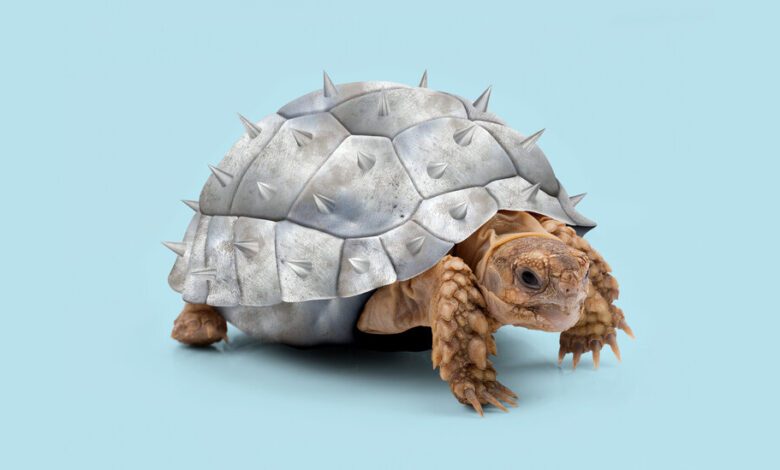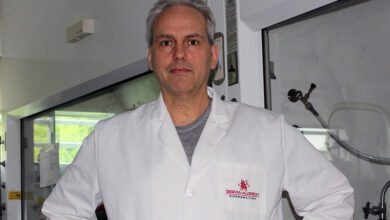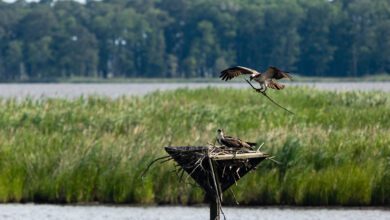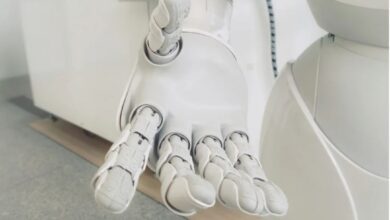
Should We Change Species to Save Them?
For tens of millions of years, Australia has been a playground for evolution, and the land below is home to some of the most fascinating creatures on Earth.
It’s the birthplace of songbirds, the land of egg-laying mammals, and the world capital of marsupials, a group that includes much more than just koalas and kangaroos. (Look at the bilby and betong!) Nearly half of the continent’s birds and about 90 percent of its mammals, reptiles and frogs are found nowhere else on the planet.
Australia has also become a case study in what happens when people push biodiversity to the brink. Habitat degradation, invasive species, infectious diseases and climate change have put many native animals at risk and given Australia one of the most diverse countries in the world. Worst rates of species loss In the world.
In some cases, scientists say, the threats are so intractable that the only way to protect Australia’s unique animals is to change them. Using a variety of techniques, including hybridization and gene editing, scientists are altering the genomes of vulnerable animals, hoping to arm them with the traits they need to survive.
“We’re looking at how we can help evolution,” said Anthony Waddell, a conservation biologist at Macquarie University in Sydney.
It’s a bold concept, challenging the basic conservation drive to keep wild creatures as they are. But in this human-dominated age, Australia is at the forefront of the world Global biodiversity crisis – Some scholars have said that traditional conservation rules may no longer be sufficient.
“We are looking for solutions in a changing world,” said Dan Harley, a senior ecologist at Zoo Victoria. “We need to take risks. We need to be bolder.”
Extinction spiral
The helmeted honeyeater is a bird that needs to be noticed, with a patch of yellow feathers on its forehead and a habit of squawking loudly as it darts through Victoria’s dense swamp forests. But over the past few centuries, humans and wildfires have damaged or destroyed these forests, and by 1989, only 50 helmeted honeyeaters remained, clinging to a small patch of swamp in Yelingpu Nature Reserve.
Extensive local conservation efforts, including a captive breeding program at Healesville Sanctuary, a Victoria zoo, have helped the birds survive. But there was very little genetic diversity among the remaining birds – a common problem in endangered animal populations – and breeding inevitably meant inbreeding. “They have very few options to make good mating decisions,” said Paul Snacks, a wildlife geneticist at Monash University in Melbourne.
In any small, closed breeding pond, harmful genetic mutations can accumulate over time, compromising the animals’ health and reproductive success, and inbreeding exacerbates the problem. The helmeted honeyeater was a particularly extreme case. The most prolific birds remained Ten is the number of offspring As the least reproductive, females had an average lifespan of half, Dr. Snacks and his colleagues found.
Without any kind of intervention, the helmeted honeyeater could be pulled into an “extinction spiral,” said Alexandra Pavlova, an evolutionary ecologist at Monash. “It became clear that something new had to be done.”
A decade ago, Dr. Pavlova, Dr. Snooks, and several other experts suggested An intervention known as genetic rescuesuggests adding some Gippsland yellow honeyeaters and their new DNA to the breeding tank.
Helmeted honeyeaters and Gippsland honeyeaters are members of the same species, but they are genetically distinct subspecies and evolved apart from each other approximately 56,000 years ago. Gippsland birds live in drier, more open forests, and lack the conspicuous crown of feathers that give helmeted honeyeaters their name.
Genetic rescue was not a new idea. In one widely cited success, scientists have revived… A small group of inbred tigers Florida by importing wild panthers from a separate population from Texas.
But this approach violates the traditional conservation principle that states that unique biological collections are sacred and should remain separate and genetically pure. Sarah Fitzpatrick, an evolutionary ecologist at Michigan State University, who found that… Genetic rescue is underutilized in the United States of America.
Hybridizing two species of honeyeaters ran the risk of confusing what made each subspecies unique and creating hybrids that were not well suited to either species. Moving animals between populations can also spread diseases, create new invasive populations, or destabilize ecosystems in unpredictable ways.
Genetic rescue is also a form of active human intervention that violates what some scientists refer to as “conservation rules.”Spirit of self-control“It has sometimes been criticized as a form of playing God.
“There was a lot of concern among government agencies about doing this,” said Andrew Weeks, an environmental geneticist at the University of Melbourne who initiated the process of genetic rescue. The endangered mountain pygmy possum In 2010. “It was the idea that the population was on the verge of extinction that gave government agencies a boost, I think.”
Dr Snooks and his colleagues made the same calculation, arguing that the risks associated with genetic rescue were small – before the birds’ habitats were fragmented and degraded, both subspecies I sometimes did crossbreeding In the wilderness – and paled in comparison to the risks of doing nothing.
Thus, since 2017, Gippsland birds have been part of the helmeted honeyeater breeding program at Healesville Reserve. In captivity there have been real benefits, with many mixed pairs being produced More independent chicks per nest Of pairs of two helmeted honeyeaters. Dozens of hybrid honeyeaters have now been released into the wild. They appear to be in good shape, but it is too early to say whether they have a fitness advantage.
Monash and Zoo Victoria experts are also working on genetic rescue of other species, including the critically endangered Leadbeater’s opossum, a small tree-dwelling marsupial known as the forest fairy. Lowland opossums share the Ylingpo swamps with the helmeted honeyeater; In 2023, There are only 34 opossums left in the lowlands. The first genetic rescue joey child At the Healesville Reserve last month.
Scientists hope that enhancing genetic diversity will make these groups more resilient to any unknown risks that may arise, increasing the odds that some individuals will possess the traits needed to survive. “Genetic diversity is your blueprint for how you deal with the future,” said Dr Harley from Zoos Victoria.
Targeting threats
For the northern chickadee, a small marsupial predator, the existential threat arrived nearly a century ago, when an invasive poisonous cane toad landed in eastern Australia. Since then, poison dart frogs have steadily marched westward, wiping out entire populations of dassaurids, which eat exotic amphibians.
But some surviving groups of dassaurs in eastern Australia appear to have evolved Aversion to frogs. When scientists crossed frog-hating dassaurids with naïve dassaurids, the hybrid offspring also Their little pink noses turned up In poisonous amphibians.
What if scientists moved some of the frog-avoiding dicipids west, allowing them to spread their distinctive genes before the cane toads arrived? “You’re essentially using natural selection and evolution to achieve your goals, which means the problem is completely and permanently solved,” said Ben Phillips, a population biologist at Curtin University in Perth, who led the research.
However, field testing showed how unpredictable nature can be. In 2017, Dr. Phillips and his colleagues released him A mixed group of northern finches on a small island infested with frogs. Some quolls Did not hybridizeThere was preliminary evidence of natural selection for “smart frog” genes.
But Dr. Phillips said that these frogs were not yet fully adapted, and some of the frogs ate these amphibians and died. A large forest fire also broke out on the island. Then the hurricane hit. ““All of these things conspired to lead to the extinction of our experimental population,” Dr. Phillips said. He added that scientists did not have enough funding to try again, but “all the science aligned.”
Scientific advances could make future efforts more targeted. In 2015, for example, scientists created even more Heat resistant coral By hybridizing colonies from Different latitudes. in Proof-of-concept study As of 2020, researchers have used a gene-editing tool known as CRISPR to directly alter the gene responsible for heat tolerance.
CRISPR won’t be a practical, realistic solution any time soon, said Line Bye, a biologist at the Australian Institute of Marine Science and author of the two studies. “Understanding the benefits and risks is really complicated,” she said. “And the idea of interfering with nature is quite confronting to people.”
But there is growing interest in the biotechnological approach. Dr. Waddell hopes to use the tools of synthetic biology, including CRISPR, to engineer frogs resistant to the fungus chytrid, which causes a deadly disease that has already spread. Contributed to extinction At least 90 species of amphibians.
The fungus is so difficult to eradicate, that some endangered species can no longer survive in the wild. “Either they live in glass boxes forever, or we come up with solutions that enable us to return them to nature and thrive,” Dr. Waddell said.
Unintended consequences
However, no matter how sophisticated the technology becomes, organisms and ecosystems will still be complex. Tiffany Koch, a geneticist at the University of Melbourne, who also hopes to… Creating chytrid-resistant frogs. A genetic variant that helps frogs survive may make them more susceptible to another health problem, She said.
There are plenty of cautionary tales, and efforts to re-engineer nature have backfired spectacularly. In fact, poisonous cane toads were released into Australia intentionally, in what turned out to be a highly misguided attempt to control pest beetles.
But some environmental groups and experts feel uncomfortable with genetic approaches for other reasons as well. “Focusing on intensive intervention in certain species can be a distraction,” said Cam Walker, a spokesman for Friends of the Earth Australia. He said staving off the extinction crisis will require broader landscape-level solutions such as halting habitat loss.
Moreover, animals are autonomous beings, and any interference with their lives or genomes must have a “very strong moral and ethical justification” — a hurdle that even many traditional conservation projects do not cross, said Adam Cardellini, an ecologist at Deakin University in United State. Victoria.
Chris Lane, a philosopher of biology at Macquarie University, said he believes in the fundamental conservation goal of “preserving the world as it is for its heritage value, its ability to tell the story of life on Earth.” However, he said he supports cautious and limited use of new genomic tools It may require us to reconsider Some ancient environmental values.
In some ways, supported evolution is an argument—or perhaps an admission—that there is no turning back, no future in which humans do not profoundly shape the lives and destinies of wild creatures.
For Dr. Harley, it became clear that preventing further extinctions would require human intervention, innovation and effort. He added: “Let us rely on that, and not be afraid of it.” “My view is that 50 years from now, biologists and wildlife managers will look at us and say: Why didn’t they take the steps and take chances when they had the opportunity?”



